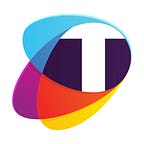An old saying that artists only become rich when they die is about to be challenged. Non-fungible tokens, or NFTs, provide digital protection for artists, musicians, and photographers, as well as a platform to make a profit from their work. The NFTs, also known as crypto-collectibles, are legally binding contracts that can be traded on the blockchain. They allow artists, musicians, and writers to authenticate digital assets and enable them to sell and protect their work.
Numerous digital assets have been created as NFTs and the market has seen astronomical growth over the past year. More than $25 billion in digitally-stamped assets was traded in 2021. This included music, photography, and sports collectibles.
Kings of Leon released the first NFT-enabled music album, When You See Yourself, in September 2021. News outlets Quartz and The New York Times also sold NFT-enabled articles.
Artists are the ones who experience the greatest joy. Around 25% of NFTs sales volume is generated by digital art. estimates that digital art has generated more than $1.9 billion. Doodles, Bored Ape Yacht Club, and Art Blocks are among the most popular digital artists.
The limiting paradigms of art are being destroyed by NFTs, and digital art will be forever transformed by them. It has been predicted that crypto collectibles will revolutionize the physical art market within the next five years.
The art and science of NFT
Digital ownership of applications increases entrepreneurs’ and creatives’ potential earnings. Marketing and finding the right market niche is the last thing to do. However, digital tokens eliminate copyright infringement and one-time earnings.
Each token that is non-fungible has an identification code that assigns it to a specific individual or company. NFT tokens are able to stamp artwork and other intellectual property using digital assets that cannot be altered. They also provide a certificate of authenticity that establishes the creator’s identity.
An NFT-enabled digital asset creator can decide how many copies of their work can be distributed before making it available to the public. The NFT is transferred to the buyer, but the intellectual property remains the property of the buyer.
The NFT can be sold to any buyer at any price by owners. Creators must include a piece of code in the digital asset that names them the original owner.
This unbreakable piece of code is where entrepreneurs and creatives make their living. NFTs are exchanged via the Ethereum blockchain using smart contracts to track the assets and transactions that have occurred.
In smart contracts, creators may include royalties. This means that when an NFT is sold, an owner receives a portion of the proceeds. The blockchain stores transaction records, which are distributed public ledger that records all exchanges between two or more people. They cannot be altered or falsified. A network of nodes maintains the data. “
Smart contracts are irreversible interactions between users and cannot be deleted according to Ethereum. They are also not controlled by users but allow transactions to execute a function on the smart contract strong>
Artists receive a one-time payment in the current art market. The majority of the proceeds go directly to the owner, which is usually an auction house or a business that sells artwork. Artists can make continuous income for the rest of their lives with NFTs.
Although the proverbial “struggling artists” might not make it big in the afterlife due to their inability to get rich, NFTs or the blockchain provides an opportunity for them to monetize their masterpieces in order that they can live a comfortable life.
Buyers can either pay with credit cards or cryptocurrency such as Ethereum to purchase NFTs. NFTs can also be traded directly with consumers. Artists with an entrepreneurial spirit and a flair for marketing themselves can cut out middlemen and keep most of the proceeds.
A universal space for digital art
In 2012, the first crypto-collectibles were created. For almost a decade, they remained a niche trading tool before the market boomed in 2021.
Time reports that NFTs were created by art collectors and speculators. Because art is rare, it sells for millions. Original paintings can’t be copied, so authentic pieces are protected forever. At least 40% of the art market is believed to be accounted for by forgeries.
NFTs gained momentum in 2018, but saw exponential growth in 2020 after a piece of digital artwork called Everyday — The First 5000 days by Mike Winkelmann, a 39-year-old graphic artist — was sold to Christie’s for nearly $70 million. This was the first sale of digital art via major auction houses.
This pivotal moment in crypto-collectibles led to an explosion in sales. In the last three quarters of 2021, NFTs saw their highest sales. NonFungible reported an average of $10-$20 million per week.
Loaded Lions is a prime example of NFT-mania’s ability to create rags-to-rich stories. It was the first collection of profile picture NFTs that was minted by crypto exchanges. They were originally minted by Crypto.com at $200 per piece but quickly received higher bids. Loaded Lion 1969, the Mars Astronaut, sold for $1 million.
Market opportunities are open to creatives outside of the art industry. The Associated Press has just announced a marketplace for photojournalists.
The NFT market’s explosion over the past year is unlikely to continue, at least not for multi-million-dollar sales. The bubble is already beginning to burst.
But NFTs, and blockchain certification, allow artists, creators, and entrepreneurs to enter and remain in the market safe in the knowledge of intellectual property protection from copyright theft, forgery, and forgery
